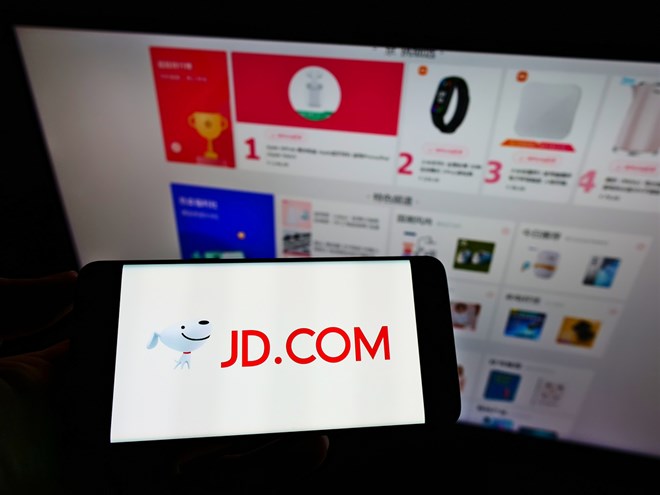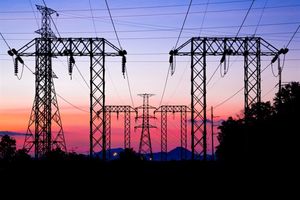
Fortune does often favor the bold - unless you're Matt Damon promoting crypto - such as in the case of Amazon.com (NASDAQ: AMZN) back in its early days when then-CEO Jeff Bezos sent out a clear letter to investors stating that the company expected to burn through cash to price out competitors and gain market share aggressively.
This strategy worked out extremely well for the firm, though surely some executives must have been sweating nervously and having a couple or more sleepless nights, wondering if their beloved firm might make it another quarter.
That bell rang somewhere on the news that Chinese retail giant JD.com (NASDAQ: JD) has undertaken a similar plan to that of Amazon. So what is the plan?
10 billion Yuan (1.5 billion USD)
Not a typo, JD.com is betting all the cash it has on hand - as of the latest quarterly results - on a campaign to outprice its main competitor in inner Chinese and smaller cities. This is a bold move, so let's hope Matt Damon isn't near JD.com's board.
This subsidy is meant to appeal to PDD's main audience in inner and smaller cities in China, where consumers tend to be more price-sensitive in the items they buy. However, anyone who knows a thing or two about a thing or two economics knows that one competitor starting a price war can quickly lead to deteriorating margins for everyone participating in the sector, leading to lower valuations, credit ratings and sentiment change.
Going toe to toe
If a price war is to be initiated, a few things must be kept in the front and center of this possible war machine.
- Which of the two firms has stronger moats - expressed in operating and net margins - to weather the attacks on the proverbial castle?
- Which of the two firms has more liquidity - namely cash - on hand to quickly pivot strategies and the like to gain further footing into this battle?
- Which of the two firms is investing bigger and quicker into marketing - hey! Pick me over them - and research and development departments - how do we make our logistics and deliveries/customer service better -.
- These can be some basic pillars of a proper arsenal for engaging in a price war over market share, breaking them down:
JD.com Specs
Speaking of moats, or operating and net margins, a 5-year average to balance out the business cycle is more sensible. Coming in at 0.8% for operating margins and 1.6% for net margins, this company is anything but mouth-watering when it comes to moats and earning strength. This could very well be because of their high rate of investment
Is JD.com a speedboat or a tanker ship? Liquidity is one of those metrics that can help answer this, using the latest figures for testing. With 11 billion Yuan as of their latest quarterly results, a total debt/capital ratio of 20.3% and EBITDA / interest expense of 17.1x, the company does not look bad. Wait, the subsidy will eat all of their cash balance, though.
Are budgets focusing on that "pick me" factor or at least on Amazon's famous customer obsession? On a five-year average basis, marketing expenses represent roughly 4% of sales with no visible growth. R&D represents 2.1% of sales with no growth, actually they have contracted this spending... weird.
PDD Holdings Specs
On a 5-year average basis, PDD's only goal is to keep above its intruder and transgressor; here's how they stand.
A whopping 21% operating margin and a bold 18% net margin. This firm has more room to move, pivot, or even become "leaner" and still put food on the table.
So we know the company won't go hungry, but do they have enough liquidity - lol - not to get dehydrated shall JD.com penetrate its well? 25 billion Yuan in cash, more than double JD's, total debt/capital of 13.7% and an EBITDA / interest expense ratio of 90.8x. Enough said, these guys are a speedboat; JD is the tanker.
Perhaps PDD has achieved such a strong moat operationally by reinvesting at greater increments. On a five-year average basis, marketing expenses stand at 4.6% of revenues, roughly matching JD's. However, PDD has doubled this investment rate in the same five-year period while JD's has remained stagnant; could this continue to be the case down the line?
The R&D department seems leaner at PDD, with five-year average spending at roughly 0.7% of revenues. This is effectively a fraction of JD's spending. However, the operating moats speak for themselves, showing PDD's non-urgent character toward R&D. They could flex those muscles with their extra liquidity if they wanted to.
Market perception
- 14.2x P/E vs 28.4x P/E. (PDD vs JD)
- 5.4x EV/Sales vs 0.4x EV/Sales. (PDD vs JD)
Investors seem to be pricing PDD's earnings cheaper than those of JD's, which given the recent decline in JD could mean a realization that the tanker cannot make it through the narrows as easily as the speedboat can.
With sales priced at a higher multiple for PDD than JD, it becomes evident that investors are willing to pay a higher multiple for the sales of PDD, expecting greater strength and growth as opposed to JD. But this is only part of the story.







